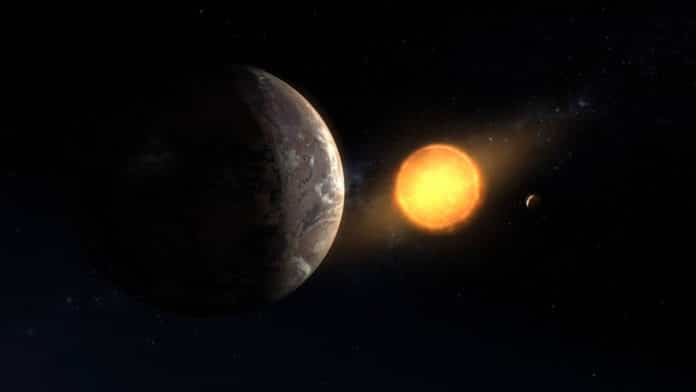While looking for the old data from NASA’s Kepler space telescope, scientists have discovered an Earth-sized exoplanet orbiting in its star’s habitable zone.
Dubbed as Kepler-1649c, the exoplanet is located 300 light-years from Earth. It is 1.06 times larger than Earth, and the starlight it receives from its host star is 75% of the amount of light Earth receives from our Sun. Meanwhile, it has a temperature similar to the Earth.
The slight difference between this Earth-like exoplanet and Earth that it orbits a red dwarf.
Kepler-1649c orbits its small red dwarf star so tightly that a year on Kepler-1649c is equivalent to only 19.5 Earth days.
However, none have been observed in this system; this type of star is known for stellar flare-ups that may make a planet’s environment challenging for any potential life.
Thomas Zurbuchen, associate administrator of NASA’s Science Mission Directorate in Washington, said, “This intriguing, distant world gives us even greater hope that a second Earth lies among the stars, waiting to be found. The data gathered by missions like Kepler and our Transiting Exoplanet Survey Satellite (TESS) will continue to yield amazing discoveries as the science community refines its abilities to look for promising planets year after year.”
However, most of the information remains obscure about Kepler-1649c, including its atmosphere, which could affect the planet’s temperature.
Scientists think that there is an error in calculations of the planet’s size. Further studies are expected to gage whether it is promising for life as we know it. But based on what is known, Kepler-1649c is especially intriguing for scientists looking for worlds with potentially habitable conditions.
Andrew Vanderburg, a researcher at the University of Texas at Austin and first author of the study said, “Out of all the mislabeled planets we’ve recovered, this one’s particularly exciting – not just because it’s in the habitable zone and Earth-size, but because of how it might interact with this neighboring planet. If we hadn’t looked over the algorithm’s work by hand, we would have missed it.”
Journal Reference:
- A habitable-zone Earth-sized Planet Rescued from False Positive Status. DOI: 10.3847/2041-8213/ab84e5
